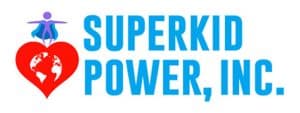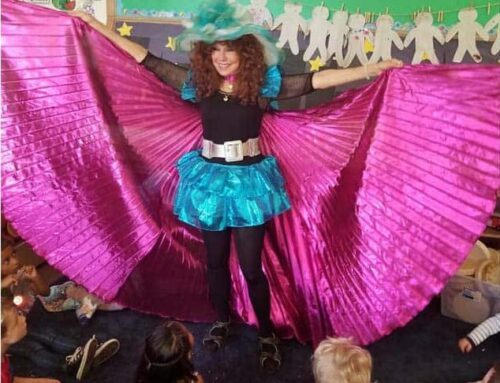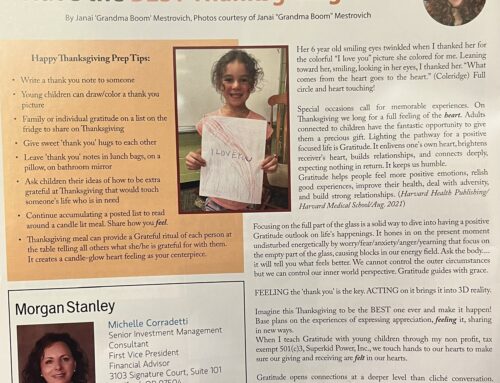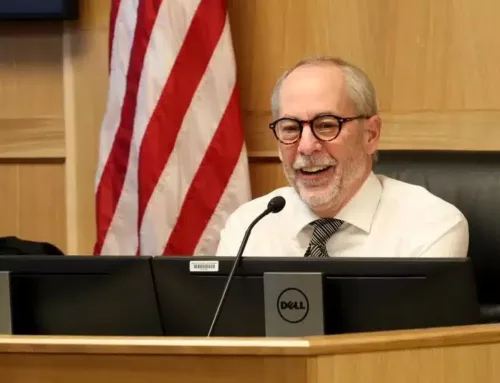(Originally published on website of ORAEYC 1/29/19 – Oregon Association for Education of Young Children – where I blog monthly.)
The 2 year old girl fell flat and began screaming. The 3 year old boy ran over to her, concerned and wanted to help. He gently demonstrated how to take slow deep breaths to feel better. The little girl stopped crying and just stared at him. He called back to me, “Grandma Boom, it really works to take deep breaths and get calm when you get hurt!” He was overjoyed with his ability to help her.
Empathy brings connection. My grandson connected with the little girl and with her pain. Some children shy away from someone in pain, not wanting to feel the discomfort or not knowing what to say or do. Research shows when children have secure attachment relationships with their caregivers, they can count on their caregivers for emotional and physical support. These children are more likely to sympathize and offer help to people in distress. According to Dr. Michele Borba, empathy is a social-emotional skill that can be developed.
Fifteen years ago I witnessed a car flip in the air while I was driving. When I pulled over, others had called 911. The driver in the upside down car was trapped, in shock, conscious, and blood was pouring from her head into her eyes down her face. Others who had stopped removed themselves at least ten yards away, probably afraid and not knowing what to say or do. I knelt on the glass-riddled dirt next to the car and spoke to the woman, keeping her conscious, connected, and not alone. She could not move. Using my self-regulation skills to keep calm, I spoke with her, telling her my name and asking hers. With her permission, I used a towel to remove the blood from her eyes. I said goodbye when the ambulance arrived. The woman whispered deep gratitude for my presence. Empathy served as our connecting pathway. Self-regulation skills are the foundation for healthy empathy; being aware of one’s own internal state and being able to extend empathy to another proved helpful for my grandson and myself.

3D visual aids stimulate children to grasp a concept and learn according to where they are in their own frame of reference to someone who is hurting. The dolls become a catalyst for encouraging children to speak and connect with simple questions or comments. Role modeling empathy plays a major role in teaching children how to care in this way.
Choose a question or statement to help children begin to understand empathy. “The boy got hurt and has an owie. What do you think his friend said to him?” “Do you think the girl feels badly for the boy who got hurt?” “It easier for the girl to help the boy if she takes a deep belly button breath and calms herself first.” “If you got hurt, would it feel good if a friend tried to help you?” “Do you think the boy’s head hurts?” Share your own dialogue with the hurt boy as a role model.
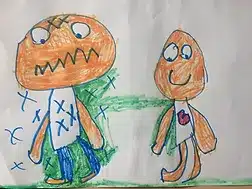
Artwork is a great tool in teaching empathy. A five year old boy who was diagnosed as being autistic could not talk about empathy. However, once he drew the picture, he told me, “I am always stressed.” (pointing to the X’s). “My friend helps me.” (pointing to another boy) It was an extraordinary experience that amazed his classroom teacher.
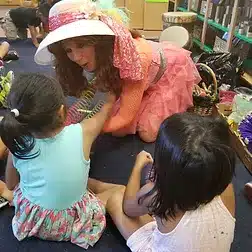
The pivoting point is to develop a caring connection. That can be through a caring hand on someone’s shoulder, kind words, offering to get help or a band-aid, sitting and listening to what caused the pain, or a myriad of other scenarios. The jingle says it all:
“I’ve got a secret I want to share. I feel good inside whenever I care.”
Resources:
-
Superkid Power Guidebook/Janai Mestrovich, page 159 CARE
-
jinglemicheleborba.com/how-to-teach-kids-empathy-building-skills
-
Waters et al 1079; Kestenbaum et al 1989; Barnett 1987
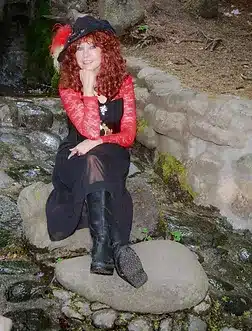
Janai Mestrovich, aka Grandma Boom, is a pioneer in children’s stress prevention programs and acclaimed author of 7 children’s books about stress management and resiliency. With a Master’s Degree in Family and Child Development, Grandma Boom teaches in child care settings about stress skills and emotional intelligence. Janai has travelled the globe sharing her expertise on empowering children. She encourages all, young and old alike, to engage their joy-filled inner child, and tap into the freedom of holistic aging. Click here to learn more about Janai and her work to empower children to develop inner strength and resilience.
